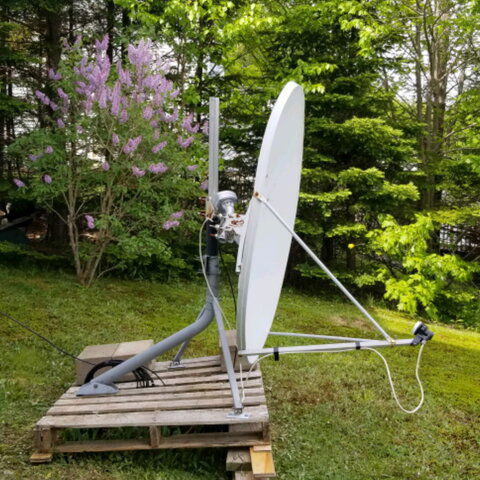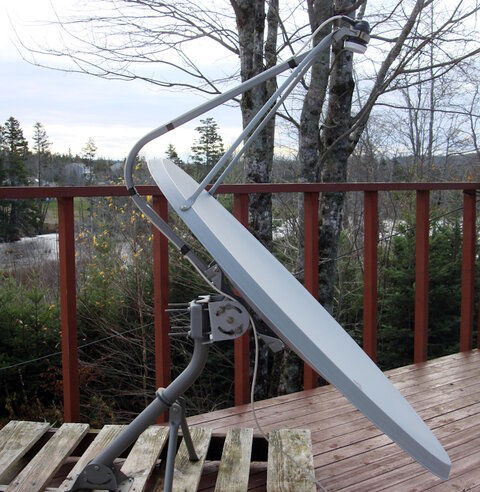For me, the signal is about 3 degrees above horizon. I want to try and get the VOA..
I would be using a 39 inch dish. I already know from setting up 30w, the darn dish looks like it is pointed at the ground. So, for 15w, I'm sure ill have issues mounting it right side up being the dish will need to be pointed so far down... So, what is the formula when you turn the dish upside down?? Any pointers? Ill be mounting the dish at about 9 feet above ground, and has a nice line of sight and the ground drops off so, the terrain works in my favor... There are no trees... With VOA being a 1/2 FEC, I'm thinking i might have some luck picking it up, and would be a great test.
I would be using a 39 inch dish. I already know from setting up 30w, the darn dish looks like it is pointed at the ground. So, for 15w, I'm sure ill have issues mounting it right side up being the dish will need to be pointed so far down... So, what is the formula when you turn the dish upside down?? Any pointers? Ill be mounting the dish at about 9 feet above ground, and has a nice line of sight and the ground drops off so, the terrain works in my favor... There are no trees... With VOA being a 1/2 FEC, I'm thinking i might have some luck picking it up, and would be a great test.



